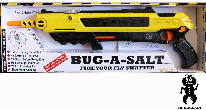Most flower gardens attract a combination of insect and animal pests. Common insects include aphids, beetles, caterpillars, cutworms, grasshoppers, slugs, mites and millipedes. Animals such as mice, squirrels, chipmunks, deer, rabbits and house pets are also common pests in the garden.
There are natural ways to keep insects out of the garden. Include marigolds in the garden. They are a natural insect repellent.
Purchasing beneficial insects to inhabit the garden is another organic solution. Ladybirds, lady bugs and praying mantis are natural predators to many garden pests. Many local coops have information on regional insects and control ideas.
As a last resort, consider spraying insecticides to get rid of unwanted insects in the garden. Read the label thoroughly to insure the spray will attack the pest you are trying to evacuate from the garden. Acephate is a common chemical used to treat thrips, beetles, rose lugs, leaf cutter bees, spider mites, and aphids. Plant bugs are a large group of insects that include lygus and stink bugs will respond to RosePride.
Fencing can help keep animals out of the flowers; however, it has to be high enough to prevent them from reaching over it to nibble at the flowers. Many animals hate daffodils, so adding them to the garden can be a natural deterrent. If the flowers are in a flower bed rather than large pots, the fencing will have to be embedded low enough in the ground to prevent tunneling to get to the flowers. Electric fencing may also be an option to keep the animal population out of the garden.
Other pests that can be harmful to a garden come in the form of mildew, rust and fungus. Warm wet climates with high humidity are the perfect breeding ground for mildew and fungus to thrive. Practicing good sanitation and hygiene in the garden will help reduce this form of garden enemy. Using fungicide containing triforine or chlorothalonil will help eradicate these infestations.
Should your flower garden contract a virus. Viruses can weaken a plant and cause death. Most viruses start with roses and spread if not contained early. A virus can be recognized by a yellow or creamy veins in foliage.
Keeping good hygiene in a garden is essential to prevent unwanted infestations. Keep a regular watering and fertilizing routine to keep the plants healthy and reduce stress. Remove dead leaves and weeds on a regular basis. Being proactive will help prevent problems before they arise.

Have Fun Getting Those Pesky Flies! Get rid of them with the original salt gun. Use a pinch of salt, pump the handle, turn the safety switch, aim, and fire. Kills flies within 3 feet with virtually no mess. Won't harm glass, windows, or walls. Check out Bug-A-Salt today!
While flower gardens can bring some beauty and peace to your life, pests can easily ruin that peace. Managing flower ...
Discover MoreRabbits, while they may look all cute and fluffy, can be some really nasty pests when it comes to your yard or garden. ...
Discover MoreGrasshoppers can be difficult to get rid of as adults. The key is to kills them as larvae or babies. There are many ...
Discover MoreThere are currently no comments for this tip. (Be the first to leave your comment—just use the simple form above!)
Copyright © 2026 Sharon Parq Associates, Inc.
Comments